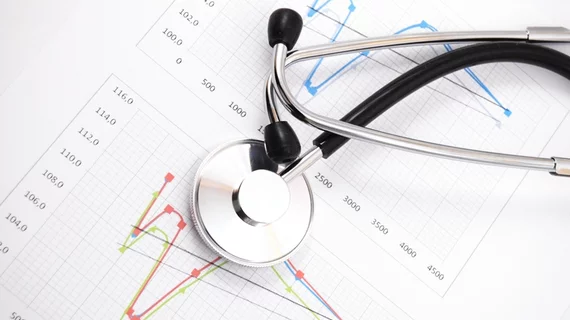Analog vs. digital stethoscopes: Is electronic really an improvement?
A side-by-side comparison of electronic and analog stethoscopes suggests a digital approach to auscultation is indeed superior to its predecessors, debunking the idea that electronic models might suffer from sound cutoffs and contact artifacts that decrease their utility.
Barry Silverman, MD, and Michael Balk, MD, both of Emory University School of Medicine in Atlanta, conducted a simple 219-patient test in which a single, well-versed cardiologist examined each individual with both an analog binaural stethoscope and a digital alternative, the Thinklabsone electronic stethoscope.
“Very little had changed in the basic stethoscope construct and technology until the introduction of the electronic stethoscope,” Silverman and Balk wrote in the American Journal of Cardiology Jan. 4, noting digital models made their debut in the 1950s, more than a century after the first analog stethoscope was introduced by Rene Laennec. “However, amplification of stethoscope contact artifacts, and potential for sounds to be cut off or less sharp past a conduction threshold, has led to the question of whether they are an improvement in the beside cardiac examination.”
In the authors’ trial, examination with both an analog and electronic stethoscope yielded 952 useable measurements in which audible sounds and murmurs were heard. The pitch, clarity and loudness of the digital stethoscope was preferred to analog in 65 percent of cases, while the two were deemed equal in 30 percent of cases.
Silverman and Balk said the majority of their patients didn’t have a murmur, but in those who did, the digital stethoscope was superior or equal in 96 percent of exams. During lung examinations, the electronic stethoscope was preferred 99 percent of the time.
“We found that a digital stethoscope records clearer sounds through a patient’s clothes, and the Korotkoff sounds are heard better with a digital stethoscope when measuring manual blood pressures,” the authors wrote. “Binaural stethoscopes require the physician to stretch and lean over patients or maneuver around a hospital bed, which can place physicians in uncomfortably close proximity to the patient and frequently results in the displacement of the ear piece.”
While “a good fit is the exception” in the case of ear pieces on traditional analog devices, they said, the Thinklabsone stethoscope can be used with noise-canceling headphones that allow for volume adjustment, signal enhancement and both visual and audio output. That makes them ideal for auscultation in the presence of ambient hospital noise and a good teaching option for med school students, since the sounds can be recorded, replayed and converted into visual form. It’s also affordable, at less than $500.
Though some physicians argue that, 200 years after its introduction, the stethoscope is outdated and obsolete, Silverman and Balk disagree.
“Auscultation is an important diagnostic tool and the digital stethoscope represents a significant advance—a development that may alter what has been an icon of our profession,” they wrote.

